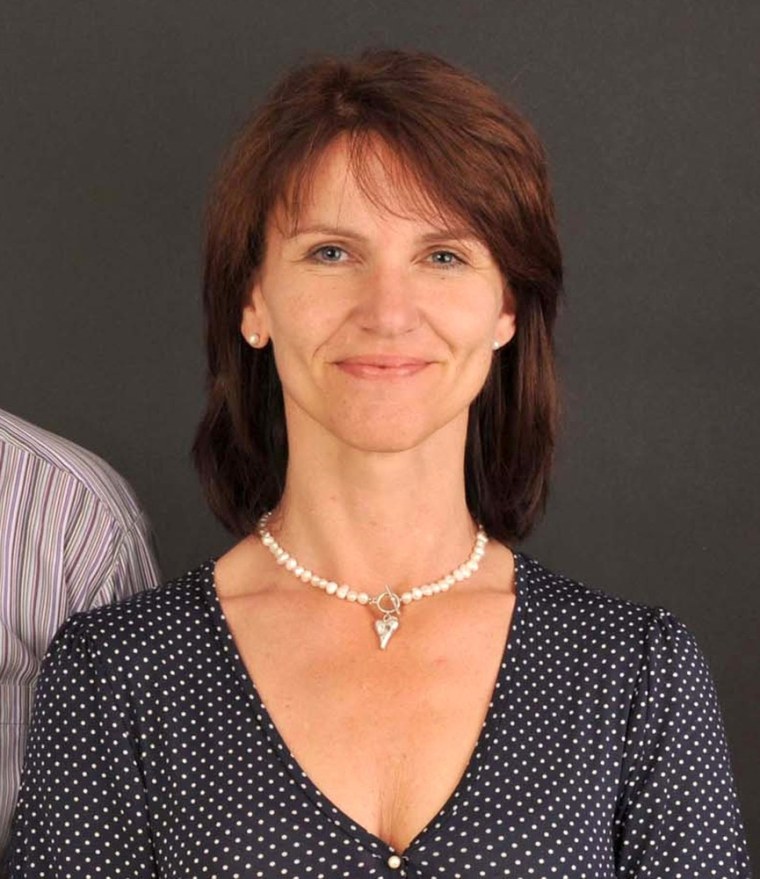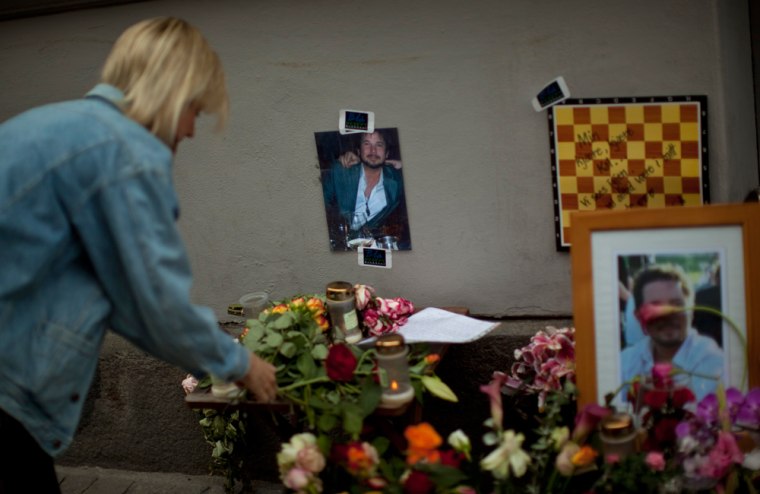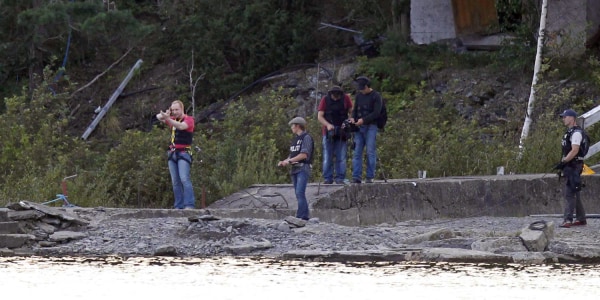As the first names of victims of Norway's mass killings were released, one stood out for many Norwegians: Monica Bosei, 45, who had worked for so long at the island camp where most of the deaths occurred that Prime Minister Jens Stoltenberg said, "For a lot of us, she was Utoya."

With the nation still reeling from grief and shock, the attorney to the confessed killer Anders Behring Breivik said Tuesday that his client appeared to be insane, believing his attack would launch a necessary revolution. Breivik said Monday that he was part of a campaign to "save" Europe from Muslims, but so far there has been no confirmation of collaborators.
Just four of the rampage victims' identities were confirmed by the National Police Directorate, according to regional reports.
They included Gunnar Linak, 23, who was at the Utoya island at a Labor Party summer camp where most of the victims were shot to death.
Linak was talking to his father by phone when the massacre started, according to a report in the Toronto Star, and told him: "Dad, dad there is a shooting, I have to go."
Also confirmed dead were Tove Ashill Knutsen, 56, Hanna M. Orvik, 61, and Kai Hauge, 32.
Norwegian publications, that were pulling together victims lists through contacts with friends and family, offered a more complete picture, though as yet not official.
The Norwegian newspaper VG reported that Bosei had been killed, though her husband and two daughters, who were also present on the island, had survived.
Bosei, also known as "Mother Utoya," was a professional accountant, and had recently been named head of the Norway Maritime Museum. She apparently became suspicious when she was chatting with Breivik, who was dressed in a policeman's uniform, on the ferry out to the island. A witness on the ferry said she was shot when she ran off to alert an off-duty policeman who was working as a guard, according to the London Evening Standard.
The guard, Trond Berntsen, turned out to be the 51-year-old stepbrother of Norway's Princess Mette-Marit. He too was reported dead, according to multiple press reports, though not on the official government list. Berntsen reportedly saved his 10-year-old son by shoving him out of the way just before he challenged the gunman.

Many of the victims reported in the press were in their teens and 20s, including Tore Eikeland, an aspiring politician who was chairman of a regional youth party, and Ismail Haji Ahmed, 19 an ebullient dancer who appeared on "Norway's Got Talent" with the stage name of Isma Brown.
Iraq-born Jamil Rafal Yasin, whose family sought refuge in Norway when she was a child, was missing and feared dead, according to The Telegraph.
The youngest victim in the massacre is believed to be appears to be 14-year-old Johannes Buo, who has not been seen since the shooting.
Breivik reportedly told his lawyer that he was surprised and satisfied by the number of people he had killed in his attacks.
"This whole case has indicated he's insane," Geir Lippestat told a room full of journalists.
He also said his client was surprised he wasn't stopped earlier in the shooting on Utoya island or killed on the way to court on Monday.
"He is sorry he had to do this but it was necessary to start a revolution in [the] Western world," Lippestat said, adding that he shows hate to anyone who's not an extremist.
The lawyer said it was too early to say if Breivik would plead insanity at his trial, expected to be a year away. Lippestat said he would quit if Breivik did not agree to psychological tests.
"He hates all the Western ideas and the values of democracy ... he expects that this is the start of a war that will last 60 years.
"He looks upon himself as a warrior. He starts this war and takes some kind of pride in that," said Lippestat, a member of the Labor party whose youth wing had been the target of Friday's shooting rampage.
Lippestad said Breivik had used "some kind of drugs" before the crime to keep strong and awake, and was surprised he had not been killed during the attacks or en route to Monday's court hearing.
'Several cells abroad'
Lippestat also said that Breivik said he is part of an anti-Islam network that has two groups in Norway and several more abroad, although he refuses to give police any information about them. Breivik is cooperating with police in other ways, he said. Police declined to say where Breivik is currently being held.
"He talks about two cells in Norway, but several cells abroad,'' said Lippestat, adding that Breivik has had no contact with his family.
Norwegian police and researchers have cast doubt on such claims. Police have checked many other buildings in Oslo and have not found any other explosives.
The Aftenposten daily said Breivik's interrogation was moving slowly, with the confessed killer silent on his claims about sleeper cells or other potential collaborators.
Researchers doubt Breivik's claim that he is part of a wider far-right network of anti-Islam "crusaders," seeing them as empty bragging by a psychopathic fantasist who has written that exaggeration is a way to sow confusion among investigators.
Magnus Ranstorp, Research Director at the Center for Asymmetric Threat Studies at the Swedish National Defense College said that as far as he knows, nobody had evidence of the existence of the Knights Templar organization.
"There's no one who seems to know if the group exists or if it's something he made up," he told Reuters. "They (mass killers) are usually alone. He's extremely narcissistic and he goes on about himself and his role in history."
Even the final entry in Breivik's own 1,500 page manifesto says on July 22: "The old saying: 'if you want something done, then do it yourself' is as relevant now as it was then."
Police face criticism
On Tuesday, Justice Minister Knut Storberget met with police chiefs who are facing criticism for taking more than an hour on Friday to stop a shooting spree in which 68 people, mostly teenagers, were shot after a bomb in Oslo killed eight.
"It is very important that we have an open and critical approach...but there is a time for everything," Storberget said after talks with Oslo's police chief, referring to questions about the police response time.
More than 100,000 Norwegians rallied in Oslo on Monday night, many carrying white and red roses, to mourn the dead and to show unity after July 22. Tens of thousands of others rallied in other cities from Tromsoe to Bergen.
Norwegians have felt a widening sense of relief that 32-year-old Breivik seems to have been alone in his drive to protect Europe from "cultural Marxism" and a "Muslim invasion" by striking at Norway's ruling Labor Party.
In signs that police are toning down fears that Breivik was part of a wider network, border controls imposed on July 22 were lifted late on Monday.
Police defended themselves from suggestions that some alarm bells should have rung about Breivik. The head of the PST security police even said he would have slipped through the net in former East Germany with its feared Stasi police.
PST says Breivik's name appeared only once, on a list of 50-60 Norwegians sent by Interpol after he paid 120 crowns ($22.16) to a Polish company that sold chemicals and was on a watch list. They found no reason to react.
"I don't think even Stasi Germany could have uncovered this person," PST chief Janne Kristiansen told the VG newspaper's online edition, adding he was "the incarnation of evil."
Even father horrified
Breivik is likely to face a lifetime in jail if convicted of the crimes, which included shooting dead terrified teenagers on Utoya island at a Labor Party summer camp.
He admits the attacks, but denies criminal responsibility. Even his father is horrified.
Slideshow 57 photos
Norway in mourning after massacre
"In my darkest moments, I think that rather than killing all those people, he should have taken his own life," Breivik's father told Norwegian independent TV2 in France.
He said his son, with whom he has had no contact since he was a teenager, must be mentally ill. "There is no other way to explain it."
